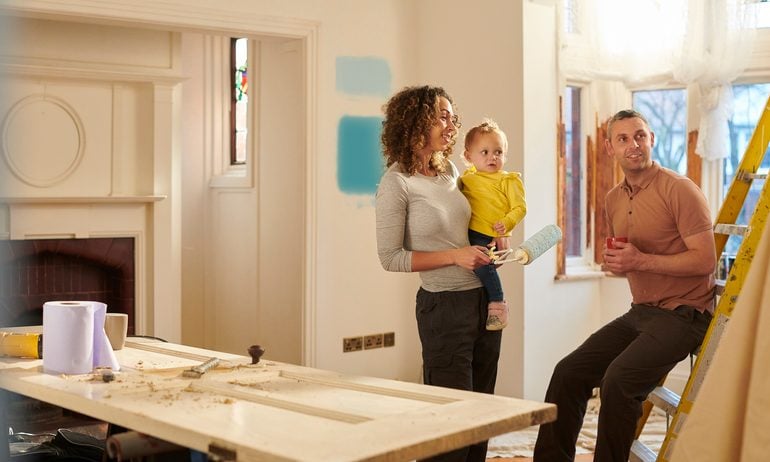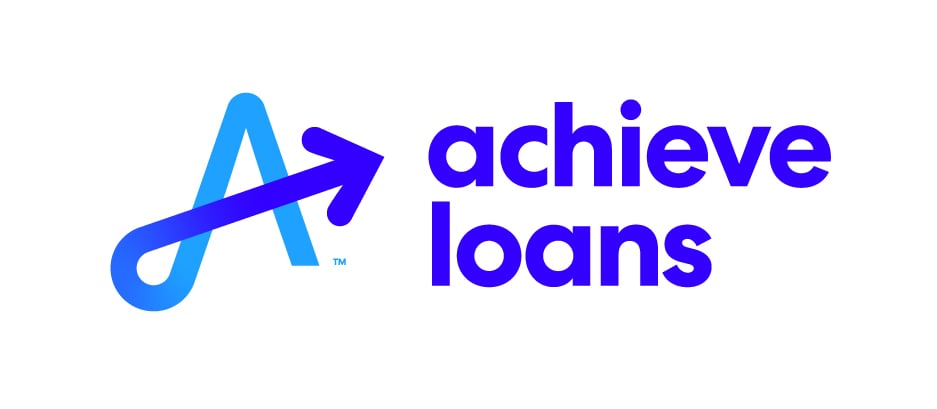How to Finance a Home Renovation With or Without Equity
To finance a home renovation, compare home equity funding to non-equity options like personal loans and credit cards.

Many, or all, of the products featured on this page are from our advertising partners who compensate us when you take certain actions on our website or click to take an action on their website. However, this does not influence our evaluations. Our opinions are our own. Here is a list of our partners and here's how we make money.
An important step in any home improvement project is deciding how to pay for it. There are multiple ways to finance a home renovation, including options that use the equity you’ve built up in your home and non-equity options like personal loans and credit cards.
Here are seven financing options, when each works best and ways to plan for your home remodel.
Using equity to renovate
Borrowing against home equity involves either getting a second home loan or replacing your current mortgage and using the funds to pay for the remodel. This type of financing often comes with low interest rates, and interest paid on home equity loans or lines of credit is tax-deductible if used for home improvements.
With equity financing, the lender usually requires a home appraisal, and you may have to pay closing costs. It also uses your home as collateral, which means the lender can take your house if you fail to make payments.
Home equity lines of credit
A HELOC is a credit line you draw from as needed. You make minimum payments only for the amount you borrow.
HELOC amounts can be up to 85% of your home’s value minus what you owe on your mortgage. Interest rates are usually variable, meaning monthly payments fluctuate as the rate changes. You typically have 10 years to spend the money from a HELOC and 20 years after that to repay the balance.
When it’s best: The flexibility to draw money as needed makes a HELOC ideal if you don’t know exactly how much the renovation will cost.

» MORE: Best HELOC lenders
Home equity loans
Like a HELOC, a home equity loan allows you to borrow up to about 90% of your home’s value minus what you currently owe. The difference is you receive the funds in a lump sum and repay over a term that’s often 30 years or less. These loans have fixed interest rates and monthly payments.
When it’s best: Because home equity loans are fully funded at one time, they’re best when you know the cost of your renovation project.
» MORE: Best home equity loans
Cash-out refinance
Cash-out refinancing replaces your existing mortgage with a larger one. You receive the difference between the current mortgage’s balance and the new, larger loan in cash, which you use to fund your renovation.
When it’s best: Cash-out refinancing works best if you need a large loan to renovate a home you plan to stay in long term. Ideally, the new mortgage has a lower interest rate than your current home loan.
HELOC & Home Equity Loans from our partners

on FourLeaf Federal Credit Union
670
$1,000,000
on FourLeaf Federal Credit Union

on Achieve
Achieve
5.0
NerdWallet rating
5.0
NerdWallet rating600
$300,000
on Achieve
Paying for renovations without equity
Cash
Many homeowners cover renovations with cash, which ensures you'll finish the project interest-free.
Setting aside money each month can help you build up savings for future home improvement projects and necessary repairs.
For do-it-yourself and other projects that don't require full payment upfront, breaking up payments over the course of the renovation helps fit the project into your budget.
When it’s best: Use cash when doing so won’t disrupt other financial goals or exceed your monthly budget.
Personal loans
Unsecured personal loans can help homeowners finance a project quickly. Most lenders can fund a loan within a week, in contrast to home equity financing, which involves time-consuming underwriting and appraisal processes.
Rates on personal loans are from 6% to 36%, which is higher than most home equity options but lower than some credit cards. There are home improvement loans for borrowers with bad credit (scores below 630), but the lowest rates are reserved for good- and excellent-credit borrowers.
Repayment terms on most personal loans are from two to seven years, but some lenders offer terms of up to 12 years for home improvements. A shorter term raises your monthly payments, while longer terms cost more in total interest.
Many online lenders offer pre-qualification to let borrowers see their potential rate, loan amount and monthly payment. Since these loans come in a lump sum and are repaid in fixed amounts, you can plan for them in your monthly budget.
When it’s best: Because personal loans are funded quickly, they're good options for urgent repairs or projects you want to start soon. They can also cover larger projects if borrowing against equity isn't an option.
Credit cards
For minor home improvements, consider a 0% APR credit card that you can pay off during the interest-free period, typically 15 to 18 months. You’ll need good or excellent credit (a score of 690 or higher) to qualify for these cards.
Some cards give rewards on certain purchases, including home improvement expenses. Retail cards also offer special financing or promotions, which can make sense if you’re buying most of your supplies from the same store.
When it’s best: Using credit cards can help you accomplish smaller DIY or short-term projects that don’t exceed a few thousand dollars.
Government loans
The government offers Title 1 loans for qualified borrowers who want to make specific updates to their home, including buying appliances, making your home more accessible or improving its energy efficiency.
You can borrow up to $25,000 for a single-family home; repayment terms are typically up to 20 years.
Title 1 loans above $7,500 require your home as collateral. First-time home-buyers must be in the home for 90 days or longer before they can borrow.
Not all lenders offer government loans. Search the Housing and Urban Development lender list for one that lends in your state.
When it’s best: If your project qualifies for this type of loan, it can pay for all or some of the project.
How much do home renovations cost?
Costs for home renovations depend on the type of project, the size of your home and location. Here are general home renovation costs, based on the most recent estimates available:
Project type | Estimated cost |
|---|---|
$79,982. | |
$25,251. | |
$17,615. | |
$20,552. | |
$30,680. | |
$65,909. | |
$3,651. | |
Sources: Remodeling Magazine 2024 Cost vs Value Report, EnergySage, Angi. | |
Tips for planning home renovations
Decide how much you can afford
It can be tempting to jump right into a home improvement project, but first assess what you can afford. Estimate how much the renovation will cost, and research multiple financing options, comparing rates, terms and qualification requirements.
Having a solid idea of the costs and financing options could mean you put off the project to allow time to build savings or equity in your home or pay down existing debt to make room for a loan payment. No matter which path you choose, ensure it fits into your monthly budget.
Consider the return on investment
Updating your kitchen or adding a home office may increase the value of your home, which can help justify the cost of the project. Consider home renovation projects that help you live more comfortably in your home while also adding to its value.
Decide between DIY or hiring a professional
If you have the right skills, tools and time, consider tackling smaller or simpler projects yourself. DIY projects save the labor costs of using a professional, though you risk mistakes that can add to your overall costs.
HELOC & Home Equity Loans from our partners

on FourLeaf Federal Credit Union
670
$1,000,000
on FourLeaf Federal Credit Union

on Achieve
Achieve
5.0
NerdWallet rating
5.0
NerdWallet rating600
$300,000
on Achieve









